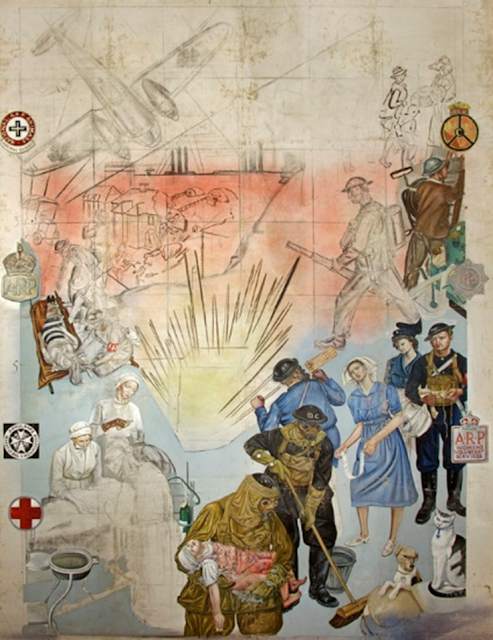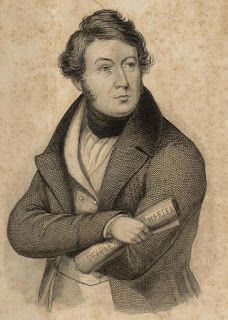Stanley Lewis's painting 'Home Front' and the story of its discovery
Stanley Lewis's painting 'Home Front' and the story of its discovery
Stanley Lewis
1905 – 2009
 |
| Home Front |
Stanley Lewis was born near
Llanfrechfa near Newport and brought up on Whitehall Farm. As a young boy he was keen on sketching and he studied
at the Newport School of Art from 1923
to 1926. He was then awarded a place
at the Royal College of Art where he studied from 1926 until 1930. In 1930 he won second prize in
the Rome Scholarship Awards in Mural Painting, and later that year returned
home to take up the post of Painting Master at Newport School of Art.
Stanley
began to exhibit annually from 1931 to
1961 in the Royal Academy Show and in 1937
his painting The Welsh Mole Catcher was voted the most popular picture. (Now in
the Newport collection)
 |
| The Mole Catcher |
It was whilst teaching in Newport that he met
his wife Min and they married 2nd
August 1939. In1939 World War II was declared and he became a Fire Warden
and was based in the college on night shifts. After their marriage they lived
at 6 Chepstow Road, and one night whilst on duty at the college, Stanley heard
a noise coming up from the Bristol Channel which disturbed him. His colleague
shrugged it off as spitfires returning home. However, it was a Dornier and it
was dropping sea mines in a row and one landed in Chepstow Road blowing Stanley
off his feet. Students were gradually disappearing to
join the forces but Stanley managed to hold onto his job and he was in Newport
when the Heinkel crashed into the Phillips family home on the night of 13th
September 1940. He was commissioned to
paint a picture depicting wartime Newport and he hung the huge canvas in
the art college. In it he sketches the incident of the 13th September and he includes various bits of equipment
that were brought over to the college for him to sketch and he used students as
his models. Sadly the work was uncompleted. In 1941 he was called up.
He
travelled to North Wales for initial
training and joined the Searchlight Regiment of the Gloucestershire Regiment in
Somerset. Later he was transferred to The Fleet Air Arm in Yovelton. Here his artistic talents were put to use and he painted a number of paintings which
ended up in the officers mess. Whilst working on one Bomber Harris turned up
and sat down with him and declared that once the war was over he should return
to being an artist. He was commissioned to paint the sinking of the Turpitz. Which know hangs in the Fleet Air Arm Museum.
After the war he returned to Newport but he was soon offered job as
principle of Carmarthen School of Art where he taught until his retirement in
1967. They
moved house on many occasions and for a while they lived in Laugharne where they became friends with
the Thomas’ and many year later his wife Min wrote a story called “Laugharne
and Dylan Thomas” and Stanley illustrated it. It was published in 1967.
Roger Cucksey takes up the story
'Exactly 60 years after it was painted two
visitors to the gallery asked to see the Mole Catcher. Born in 1905 I’d
assumed Stanley was probably dead.
 |
| Wartime Newport: Home-front in the barn |
After much discussion, he had an
extraordinary memory, I was taken into an adjacent stone barn where this
damaged and torn canvas was hanging on the wall with rusty nails. Unfinished in when he was called up
in 1940 it was folded up and had accompanied
him for the next 57 years surviving 10 house moves. He happily agreed to the rescue,
removal, restoration and display of his ‘mural’ in Newport. Stanley always
referred to it as a ‘mural'. After a great deal of work and fund
raising it was unveiled in the gallery by Newport author Leslie Thomas in time
for 60th Anniversary of the ending of WW2.'
Richard Frame and Roger Cucksey


Comments
Post a Comment